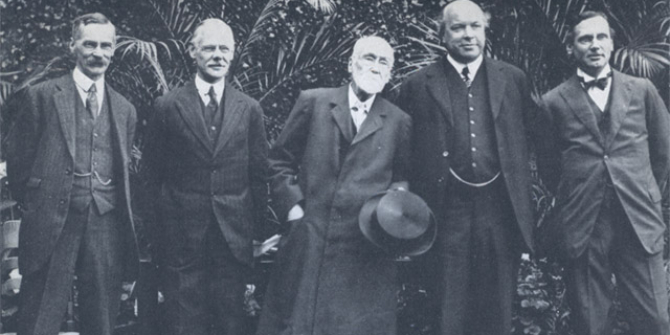Precisely ten years ago, in January 2011, Michael Porter published his pivotal article on Creating Shared Value (CSV). CSV is about ensuring long-term, sustainable value creation for shareholders while simultaneously tackling societal and environmental issues. Porter’s framework has become the reference point for how companies should approach sustainability. At the same time shareholders and investors have also begun to take sustainability more seriously. Increasingly, they scrutinise corporate performance not only on the basis of earnings but also on sustainability metrics, like the UN ESG (Environmental, Social and Governance) goals.
But, even with Porter’s compelling theoretical framework and fast-growing interest in sustainability, most companies continue to struggle to make shared value work for their businesses. There is often a disconnect between the sustainability commitments made in company reports and the reality of new business and product pipelines. Too often they are solely focused on profit maximisation.
Based on our consulting experience with large companies in different sectors, there are two main reasons for this disconnect. First, the lack of a process which clearly embeds sustainability into the innovation journey from the early stages. Second, the gulf between business units and departments charged with corporate sustainability. This divide is a function of long-established organisational power demarcations and different units, departments and teams pursuing very different goals.
Let’s start with the innovation process: usually, at the start of the process there is a step called “problem space definition”. At this point key customer issues and problems to solve are selected based on a set of criteria. Without the right emphasis on sustainability at this stage, the innovation outcome will be weak in terms of shared value. Indeed, it is most likely new products and businesses will continue to focus only on profit maximisation. Sustainability criteria should be embedded into the selection of the “problem spaces” to solve.
But how? One way is to use a simple matrix with two dimensions: business and sustainability. Each needs to be considered with equal weight. In this way, the problem statements that will trigger innovation initiatives are sustainable by design. Consequently, products and businesses launched in the market will be able to generate shared value. When positioning the problem statements on the matrix and selecting the few to work on, an important element to pay attention to is the involvement of a multidisciplinary team to ensure balanced discussions, including people with higher sensitivity to sustainability.
We have seen this at work at the global chemical company BASF. The company’s co-creation program, called Creator Space (TM), aimed to connect innovation and sustainability by involving internal and external stakeholders. It started with three broad themes — “Sustainable food chain: from farm to table”, “Sustainable urban living”, and “Smart energy for a sustainable planet”. The Creator Space (TM) team put together a list of problem statements using a set of selection criteria covering both the sustainability and business dimensions. The selected problem statements generated the Creator Space portfolio, 50 innovation projects or a multiyear journey sustainable by design.
One example from the work at BASF is Origem, whose slogan is ‘every potato counts’. It aims to promote sustainable farming in Brazil by optimising the usage of resources and, at the same time, delivering higher marketable quality and yield of potatoes. The initial problem statement was about reducing the percentage of ‘out of spec’ potatoes. It is a big problem. In Brazil, more than 10 per cent of potatoes (an astonishing 385,000 tons) is not accepted by the processing industry and is wasted. The reasons include bad farming practices, such as planting at the wrong time, poor treatment, harvesting too soon or too late, and inadequate post-harvest handling and storage. To tackle this challenge, BASF, together with other key actors along the value chain, designed and launched an innovative program that enables small and midsize growers to access BASF solutions, training and technologies, follow agronomic guidelines and allow tracking of the yield through a digital platform. Processing centres receive and classify the potatoes and feed the platform with information. Food companies and retailers purchase the potatoes and promote their sustainable origin and development.
Let’s consider the organisational dimension and how to overcome the typical disconnection between business units and the corporate sustainability department. We have already mentioned how important it is to have cross-functional teams when selecting the problem statements at the start of the innovation process. Some companies go even further by merging innovation and sustainability functions into one unit. In this way the organisation is by design (including goals and priorities) focused on sustainable innovations with a limited risk of agenda misalignments among the different units.
For example, Enel, a world leader in energy, created a single department called ‘innovability’. In the words of Enel’s chief innovability officer: “We no longer work separately on innovation and sustainability, but on innovability, a term that combines the two concepts, and not only in words, because we think it is impossible to separate them. We cannot think of innovation without being sustainable, and vice versa.” Such recognition – especially from a senior business leader — is vital to bridge the organisational gap between innovation and sustainability.
The reality is that innovation and sustainability are now inseparable. The challenge for organisations and all involved in innovation is to begin acting as if this was the case. Our experience suggests that the tools, frameworks and the will of people already exist. The challenge is organisational and process-related.
♣♣♣
Notes:
- This blog post expresses the views of its author(s), not the position of LSE Business Review or the London School of Economics.
- Featured image by Matt Ridley on Unsplash
- When you leave a comment, you’re agreeing to our Comment Policy
 Alessandro Di Fiore is the founder and chief executive of the European Centre for Strategic Innovation (ECSI) and ECSI Consulting, based in Boston and Milan. He is a consultant, author and media commentator on strategy and innovation. Alessandro has worked in management consulting for more than two decades. Twitter @alexdifiore
Alessandro Di Fiore is the founder and chief executive of the European Centre for Strategic Innovation (ECSI) and ECSI Consulting, based in Boston and Milan. He is a consultant, author and media commentator on strategy and innovation. Alessandro has worked in management consulting for more than two decades. Twitter @alexdifiore
 Gabriele Rosani is a senior manager at ECSI Consulting Milan. He has 15 years of experience in strategy and innovation consulting. He has run multiple projects around open innovation and co-creation, business model innovation, organisational agility. He has co-authored several articles on innovation. Twitter: @GabrieleRosani
Gabriele Rosani is a senior manager at ECSI Consulting Milan. He has 15 years of experience in strategy and innovation consulting. He has run multiple projects around open innovation and co-creation, business model innovation, organisational agility. He has co-authored several articles on innovation. Twitter: @GabrieleRosani






1 Comments